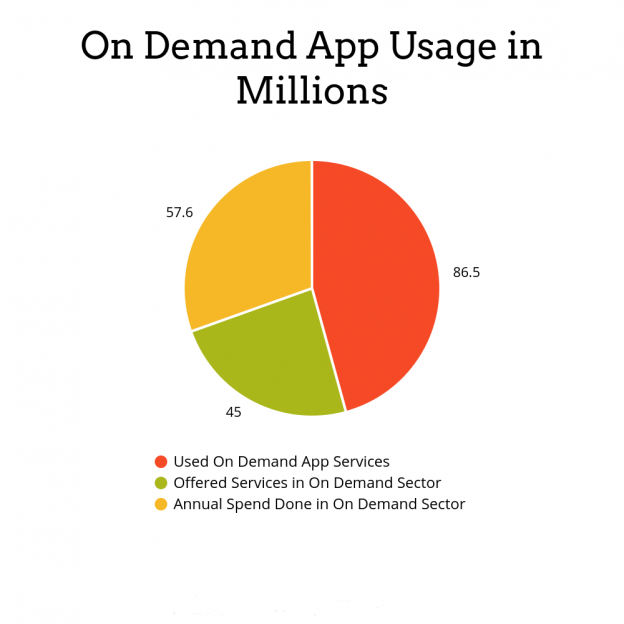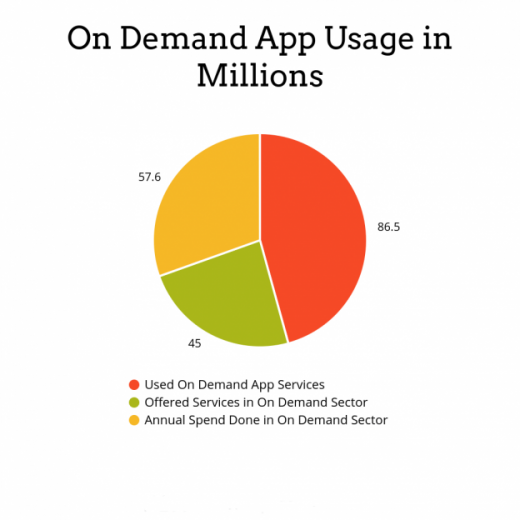On-Demand Money Making Business Model for Startups
On-Demand Money Making Business Model for Startups

It wasn’t so long ago when we used to stand in queues waiting for taxis or go to local stores for grocery shopping. However, owing to the rise of on-demand businesses – stepping out of our homes for our daily needs seems to be an idea of another era. And the COVID-19 crises has sealed the deal.
On-demand business, what is that?
The on-demand business model is also known as an access economy or a shared economy.
It basically fulfills the customer’s demand for goods and services immediately. Here, the ever-growing digital platforms make use of existing but unutilized assets and infrastructure.
The fundamental idea behind this is – Access is better than Ownership. And isn’t that a modern-day fact? If you can share or have access to goods and services immediately – there are low chances that you’ll prefer buying it.
Owing to its benefits, not only consumers but on-demand businesses also rely on renting rather than buying the service permanently. That means they work with freelancers rather than hiring full-time employees.
On-demand businesses on the rise.
There has been a 360-degree revolution in technology that has encompassed the businesses and customers both. Now due to the coronavirus COVID-19 pandemic — on-demand appshave seen an unprecedented surge (spaceo.ca).

Customers are no longer satisfied by getting what they want at a reasonable price- they not only want to have the best but also want to have it in a way that enhances their experience. And they are willing to pay for that. Businesses now understand the pain point, and if you observe – the ones that serve their customers with ‘convenience’ become most profitable.
A report from Statista states: 42% of consumers prefer online shopping. If you’re phone any of them, you know why.
With mobile apps, the convenience factor has increased multifold. The ease of accessing a convenient service is what plays a role in attracting customers. All customers have to do is make a click, and the business will be there to serve them at their doorsteps in the most time and cost-effective fashion.
The on-demand business is flourishing and how. Here’s a pie chart that shows the usage and spendings of on-demand companies.

- 86.5 Million Americans have used an on-demand service.
- 45 Million US people have offered services in the On-demand sector.
- 22.4 Million users annually spend around $ 57.6 billion on On-demand services.
Businesses need to solve their prospects’ problems and that too in the most convenient way.
On-demand business models leverage this fact and hence are thriving like never before.
A report by Harvard Business Review states: the on-demand industry is attracting 22.4 million customers annually, who spend $ 57.6 billion on them.
It wouldn’t be justified to talk about On-demand businesses and shared economy and miss out on Uber. The primary reason that Uber excelled is that it made the overall experience of commuting – convenient and cost-effective. From booking a cab to making the payment – it takes care of the whole journey. The entire service is brought to the users on a single user-friendly platter.
Reasons that make on-demand businesses profitable.
Uber has managed to raise approximately $ 10.2 billion, Urban Clap has raised nearly $ 35 million, and Ola Cabs has raised almost $ 1.18 billion after having completed seven stages of funding.
Do you think this was possible if there wasn’t a demand and supply gap to fulfill?
The on-demand businesses don’t rely on intuition and guesswork. Rather they serve their customers with what they need the most – efficient, convenient, technically updated, and cost and time-effective solutions.
That’s the reason on-demand business models prove to be a success for investors, customers, and startup owners.
It becomes an attractive space for investors because they can predict the trends resulting from technological and business integration.
The customers, on the other hand, are always on a lookout for better alternatives. This makes the on-demand industry more competitive and drenched in scope. The increasing demand is the reason that there’s no dearth of investors and industry tycoons who are more than willing to test the waters.
Another reason for its flourishing nature is that it is can be linked to all types of industries.
If we think about it, many apps practically make our every day lives hassle-free.
From hyperlocal delivery to healthcare to home and local services, the possibilities of on-demand businesses are limitless.
This means no matter what industry you choose, as long as your model is equipped with speed, accuracy, convenience, and quality – your business will be profitable.
The deciding variables for a successful on-demand business
- Degree of commoditization – The rule is simple. The more the number of variables that users care about in the context of a product or service, the less commoditized the service/product is, and vice-versa. Think about Uber – fewer variables, more commoditized. You need to identify what suits your business model.
- Pricing structure – There are two options you have – a singular pricing structure or for the complete platform. You need to choose one that fits your needs depending on your degree of commoditization.
- Delivery option – Here again, you have the option of choosing between scheduled and instant delivery. However, no matter where you start, you can always expand from one to the other.
- Stakeholders- The number of stakeholders depends on your business model. Most on-demand businesses, however, have at least two stakeholders. For example, Uber has two stakeholders- passengers and drivers.
- Supply Side and Platform relationship– To run a successful business, you’ll have to choose — whether to aggregate the existing small businesses or to contract the supply. It is easy to achieve the former.
Final Thoughts
The on-demand business models are on a roller coaster ride that will only go up in the coming years. The future is bound to belong to on-demand businesses that will serve their customers with enhanced experience and convenience.
These business models are indeed a goldmine for startups as the present-day market conditions are entirely in their favor. The technologies that make it possible are new but rapidly evolving.
The post On-Demand Money Making Business Model for Startups appeared first on ReadWrite.
(67)


